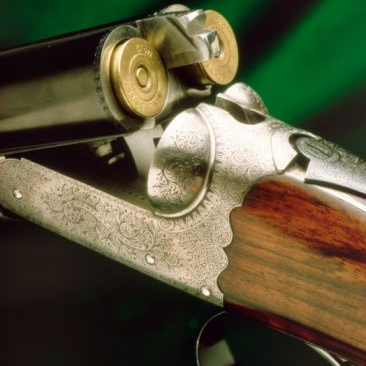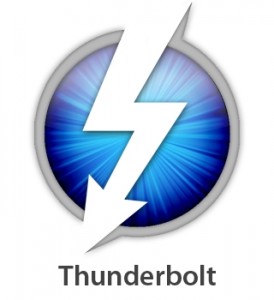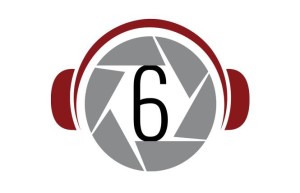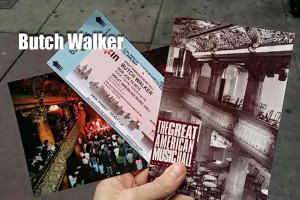So You Want To Buy A Gun… (Part 3 – Shotguns)
6 min read
Disclaimer: I am not and do not claim to be a gunsmith. Take everything I say with a grain of salt. If you decide to purchase or even shoot a firearm, contact a retailer or a qualified gunsmith first. They know way more about this than I do, and can give you more, better information than I ever could. Also, I recommend going to a local gun shop/range and taking a firearms safety course if you have never taken one before. I cannot stress this enough.
 Shotguns have been called the most versatile firearm ever, and for good reason. With a 12 gauge slug, you can hit a deer at one hundred and fifty yards. With birdshot, you can get your Thanksgiving turkey. And with 00 (pronounced “double-ought”) buckshot, you can seriously deter a home invader. They are also one the simplest – a single barrel, break-over shotgun is very, very unlikely to malfunction. Further, unlike rifles and pistols, there are only four types of shells to consider (there are more, but they are rare and very specialized). In this write up, I will describe the main types of shotgun actions, as well as the four main types of shells. All of these actions share a rifle counterpart, and are very similar.
Shotguns have been called the most versatile firearm ever, and for good reason. With a 12 gauge slug, you can hit a deer at one hundred and fifty yards. With birdshot, you can get your Thanksgiving turkey. And with 00 (pronounced “double-ought”) buckshot, you can seriously deter a home invader. They are also one the simplest – a single barrel, break-over shotgun is very, very unlikely to malfunction. Further, unlike rifles and pistols, there are only four types of shells to consider (there are more, but they are rare and very specialized). In this write up, I will describe the main types of shotgun actions, as well as the four main types of shells. All of these actions share a rifle counterpart, and are very similar.
And as always, here are the 4 rules of gun safety. These are to be followed to the letter every time you are handling a weapon. You’re absolutely no good to us dead!
RULE I: ALL GUNS ARE ALWAYS LOADED
RULE II: NEVER LET THE MUZZLE (the barrel) POINT AT ANYTHING YOU ARE NOT WILLING TO DESTROY
RULE III: KEEP YOUR FINGER OFF THE TRIGGER UNTIL YOUR SIGHTS ARE ON THE TARGET
RULE IV: BE SURE OF YOUR TARGET
SHOTGUNS
Actions
Break-open Single Shot/Double Shot
With this action, the barrel and action “break open” near the trigger, allowing the user to insert one or two rounds into the chamber. These actions are very simple, very easy to use, and there is very little chance for malfunction as there are essentially two moving parts – the trigger action and the joint where the barrel and action break open. Break-open shotguns are still incredibly common, both for hunting, sporting (such as skeet/clay pigeons), and home defense. The main reason for their popularity is their simplicity. Some models you may have to pull a hammer back, and others are cocked upon loading them. Other than that, all there is to do is point and pull the trigger. Some double barrel shotguns, however, do have two triggers; one trigger for each barrel, with one of them also serving both barrels. Example, you pull the forwardmost trigger, and one barrel fires. You would then pull the rear trigger and the other barrel fires. Or, instead, you can pull the rear trigger first, and both barrels will fire.
The classic shotgun action – the simple sound of a pump action shotgun racking a shell into place while ejecting a spent shell is an iconic piece of action movie iconography. Preferred by many for its ease of use and reliability, you all know how this works. Used by hunters, law enforcement, military, and for home defense – truly the most versatile firearm ever invented.
Semi-automatic shotguns work much the same way semi-automatic rifles pistols do. The operator does not need to do anything between shots other than pull the trigger. Depending on the model, the semi-automatic action can help to absorb some of the recoil… or it can make it worse. The first semi-automatic shotgun, the Browning A5, was a notoriously hard kicker. However, many modern 12 gauge semi-automatics are designed to help ease the recoil to help hunters shoot faster when bird hunting. Since it is semi-automatic, it has more moving parts and can be more prone to malfunctioning.
Shot Shells
Shotgun shells work much the same way as golf scores – the lower the number, the better. Meaning, the lower the number, the bigger the shell will be. What makes a shotgun a shotgun is that it shoots shot; hence, the shotgun. Shot is essentially lots of little metal balls, varying in size for its intended use. The shot, when fired, spreads into something like a cloud of lead, which is why it is used in bird hunting – only the crack shots of the world could shoot a bird with a rifle. The shot covers a greater area, thus providing you a greater chance to hit your target. The spread of the shot is controlled by your barrel by something called a choke. Many shotguns don’t have a choke, but many bird hunting shotguns do. The choke is a tube that is inserted into the barrel that usually narrows the barrel, thus making the cloud smaller. (Extremely important note – inserting chokes should only be done by people who know what they are doing – you could kill yourself otherwise)
Your intended use is very important – if you take birdshot deer hunting the deer will probably just get mad at you and run away, and if you go bird hunting with 00 buckshot, you won’t have any bird left. Most boxes of shot shells will describe its intended use on the side. Shot size may vary vastly in size, from large 00 buckshot to miniscule snake shot. It is of the UTMOST importance that you use the correct shot size for your purpose. For example, in a home defense application, bird shot can be almost useless as some sizes are so small it may not penetrate thick clothing.
Yet another type of shot shell that is in use is the slug. A slug is essentially a massive bullet that takes the place of the shot. These slugs tend to go slow and not very far and do their damage due to their size (remember, big and slow vs. small and fast). There are two main types of slugs, and each needs to be used in the appropriate shotgun. A rifled slug, oddly enough, needs not be used in a rifled barrel as the barrel will provide all the rifling needed. A rifled slug, then, needs to be used in a standard, smooth-bore shotgun barrel (WITH NO CHOKE IN IT! VERY DANGEROUS!) A rifled slug can easily turn your 12 gauge home defense or bird hunting shotgun into a deer “rifle”. On the flip side, they do make rifled shotguns, meaning the barrel is rifled. These are designed to be used for large game hunting applications and not to be used with shot. If you use shot in a rifled shotgun, the shot will bounce around in the barrel and ruin the rifling. You do not need to use a rifled slug with a rifled shotgun. Many of these rifled shotguns come with scope mounts on them. They are something of a unitasker and, in my opinion, go against the versatility that makes a shotgun so special.
So then, where does the term “gauge” come in, as in 12 gauge and 20 gauge? Gauge refers to the width of the barrel/chamber, and therefore, the width of the shell. The lower the number, the more shot a shell can hold. For instance, 12 gauge 00 buckshot may have 20-30 balls per shell, while .410 00 buckshot may only have 5 balls in it (still pretty good).
Another important measurement to consider is shell length – when purchasing a shotgun and shotgun shells, make sure that your shotgun matches the chamber length for that shell. 12 gauge shells come in two sizes, 2 3/4” and 3” chamberings. Some can take both sizes, but most cannot – do not get them mixed up, or you may wind up in the hospital. Same thing goes for magnum shells – some shotguns can take magnum shot shells, but many cannot. This too can result in a very bad boom.
I won’t give firearms for each gauge, as most manufacturers make models in several different gauges (much like engine offerings in a car – it’s the same car, just a different engine).
From largest to smallest:
12 gauge – popular for just about everything except small birds and small game
16 gauge – going somewhat out of fashion, but very utilitarian
20 gauge – popular for bird hunting and small game due to its light weight
.410 gauge – popular for children and women due to light recoil. Has also been developed for pistol use recently in the Taurus Judge
Manufacturers
So, there’s a primer to the most useful firearm known to man. Here are some popular shotgun manufacturers that you will find in just about any sporting goods store






